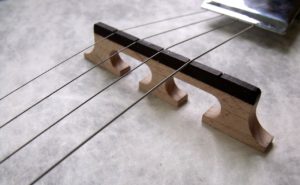 Never been the kind of composer who slows way down during the academic year and then composes like crazy in the summer, but that seems to have changed this year. I’ve been blasting out music the last three months like nobody’s business, and all in pairs: two sextets, two quintets, two large ensemble pieces, two songs.
Never been the kind of composer who slows way down during the academic year and then composes like crazy in the summer, but that seems to have changed this year. I’ve been blasting out music the last three months like nobody’s business, and all in pairs: two sextets, two quintets, two large ensemble pieces, two songs.
After fifty years of doing it, I’m still always amazed at how quickly composing goes, and how slowly. Ideas are a breeze, they are wafting in faster than I can use them. Pencil and paper slows them down; midi input slows them down, because nothing could possibly be fast enough. But then there is the process of refining those ideas, of polishing them until they sparkle. I almost always underestimate how much time that will take.
The outliers in this summer’s group are the two songs. A month ago, I wrote a bluegrass song – my first – for two voices, mandolin, banjo and guitar. When I finished it, I had this nagging feeling that the lyrics could really benefit from a high, intertwining bassoon line, of all things, so I replaced the banjo with a bassoon (I sure hope, for the sanity of our civilization, that I’m the first person to say those words: “replaced the banjo with a bassoon”) and started over, adding an electric bass in the process and ending up with a completely different piece to the same text.
There’s an important lesson here. There are standard ensembles – for example, bluegrass band – that have cultural resonance, and we need to respect those traditions. At the same time, it’s important to respect the imagination, especially when it comes up with something that doesn’t fit a specific tradition. Finding the right balance between those two – tradition and imagination – is one of the tasks of art.
I’m not a bluegrass player, not steeped in that tradition or culture, so what I do in that vein is not “true” to some people, and I understand and respect where they are coming from. It can be called appropriation, which is a dirty word in the music world. Generally, we use that word to indicate work that uses surface elements of a musical culture without respect or understanding for the original meaning of those elements, which can lead to distortion.
But the experience of being awed by a culture that is not our own is an ancient one. As a common human experience, feeling admiration for things we don’t completely understand is grist for artistic expression. So when I do bluegrassy things that are not true bluegrass, I mean no disrespect. I’m just standing where I am standing (it’s a place where no one has stood before, and yet it has a commonality with places where billions have stood), and responding to the things that catch my ear and my heart.

Visiting Aspen a few weeks ago, there was an American Roots trio (not sure if they call it bluegrass in Colorado!) of acoustic bass, mandolin/fiddle and female lead singer playing for free in the airy lobby of a hotel I wandered into one evening. Their music was so powerful and moving, in a profoundly understated vein, I began imagining how some of these elements might be transmitted into a new composition. If so, I will have to rely upon my aural memory because the albums I purchased from them didn’t quite posses the spark of magic heard that evening. Possibilities include use of related timbres, melodies, rhythms, and, most elusive of all – spirit. Finding new connections is part of what music is about, not to mention being, perhaps, the concept that saves the world.